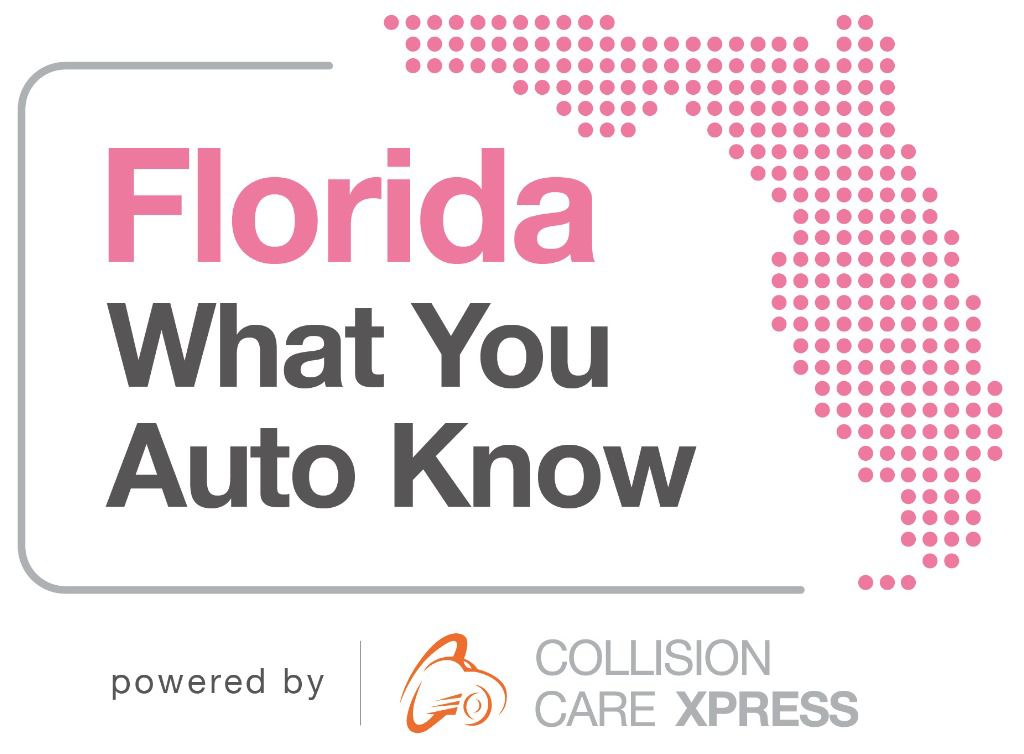Remember, just because you haven’t been in an accident, your vehicle has sustained damage from the hurricane.
I’ve lived in South Florida my whole life and know firsthand how stressful it is deal with a hurricane. From the preparations, to weathering the storm, to the post-storm clean up, it is stressful. However, after the hurricane passes, there are many reasons why you should act immediately to protect your vehicle impacted by a hurricane.
An OEM certified auto body repair shop, like Collision Care Xpress in Pompano Beach and Ft. Lauderdale, FL, is best qualified to evaluate the hurricane damage to your vehicle and assess potential repair costs.
You are at an important and critical crossroad in protecting the value of your vehicle! Seek out an auto body shop that is OEM certified by the manufacturer of your vehicle.
OEM certification means that the auto body shop has factory trained and manufacturer certified technicians and mechanics on staff to quickly and efficiently restore the vehicle to the manufacturer’s standards.
Be aware that there are many local, regional and national body shops that only have a generic ASE or I-Car certification. These shops are quick to make promises that “they can fix any make and model”. But being “certified” by an industry-wide trade organization only indicates that they’ve attended training courses offered by the trade organization and are current on their dues.
Certifications by industry trade organizations should be an entry-level requirement, and not the stopping point, in your selection process. This difference is like comparing the service center at a dealership to the mechanic operating out of the two-bay garage attached to the corner gas station.
Water can affect mechanical, electrical, and safety systems in vehicles. Water can also cause bacteria and mold growth. The longer you wait to start protecting a flooded car, the more complicated the problems. Also, the longer you wait, the more likely you will need to get rid of the vehicle.
This article summarizes what to do if your car is damaged in a hurricane. I want to help walk you through a step-by-step process:
- Step 1 – Secure the vehicle
- As soon as it is safe to go outside, you want to cover and secure any openings caused by the storm. Use plastic and duct tape to secure any openings, so no more water gets inside the vehicle.
- Step 2 – Evaluate the damages; consult a certified mechanic
- Once you get out of a hurricane, the first and immediate step should be to have your flooded vehicle inspected by a certified repair shop. They can evaluate the damage and assess potential repair costs. Tow your vehicle to the repair shop; do not attempt to start or drive your vehicle. The worst thing you can do is turn on the engine because it can lead to significant complications. Starting your vehicle allows water to get inside components and cause further damage. The other thing to remember is that starting your vehicle could cause fire, especially if the flood water impacted the electric system. Sometimes the water level could be relatively low, meaning it did not yet get to sensitive components. In that case, the mechanic may be able to clear any potential wet and save your vehicle. In short, the faster you act, the higher the chances your mechanic can save your vehicle. And remember, instead of your , local dealership or service garage, an OEM certified auto body shop, like Collision Care Xpress in Broward County, FL, may be a better option. An OEM certified auto body shop provides full mechanical services by manufacturer trained mechanics.
- Step 3 – Consult your insurance company
- Give your insurance company a call and discuss the extent of your coverage. Unfortunately, if your vehicle does not have comprehensive coverage, your policy probably doesn’t cover natural disasters like hurricanes. If you don’t have coverage, Step 2 is so critically important if you want to save your vehicle.
- Step 4 – Prevent musty smell
- When you leave the vehicle wet for a long time, it will cause a musty or moldy smell. Unfortunately, it only takes a small amount of moisture for mold to grow. And, it only take a few days for mold to colonize. Once you have mold in your vehicle, it can be a real pain to get rid of. Plus, mold has the potential to ruin the interior, and is dangerous to breathe. Getting your vehicle professionally cleaned and treated is the only option. But in the meantime, to fight and reduce the mold growth: move your car into direct sunlight, if possible; and, open all the windows and doors. This will help dry and air out the car. Mold can’t grow in dry conditions.

Robert Molina writes insanely useful guides about the auto body repair process and what you need to know to make the process less stressful. With more than 25 years of experience as an independent auto body shop owner, he’s on a mission to stamp out gobbledygook and raise the bar for quality collision and auto body repairs.


